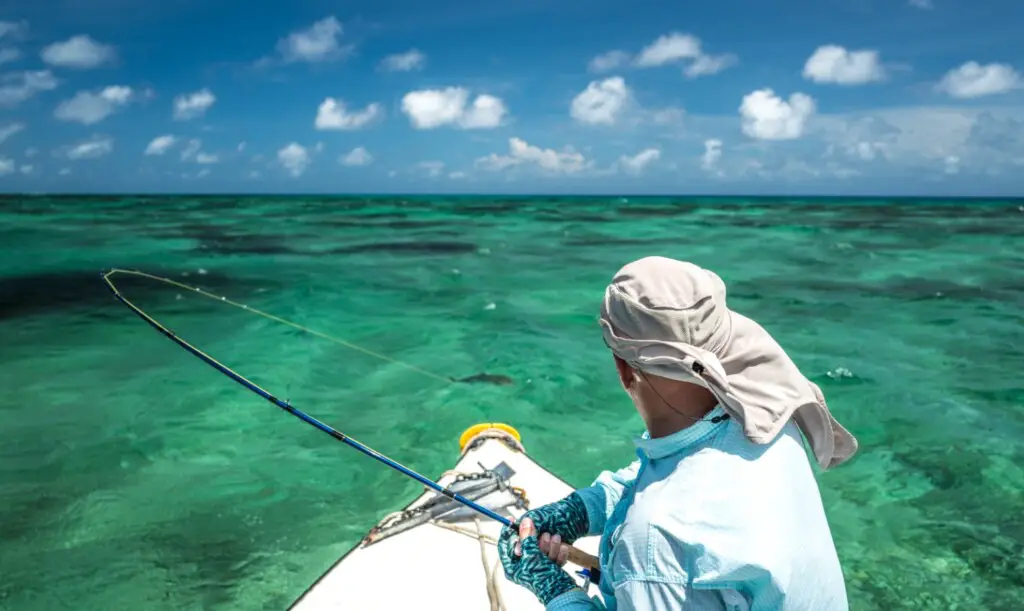A Norwegian mountaineer successfully summited Mount Everest recently but soon after developed snow blindness and lost vision in both eyes. He was medevacked to safety. The same thing happened to a high climber from Ireland a few weeks earlier.
The sun’s UV rays can harm your skin — and your eyes. If you want to avoid photokeratitis then follow the advice of medical experts who have helped skiers, climbers and sailors dodge this painful condition known as snow blindness or sunburn of the eye.
Mark Pattison, a former NFL player, successfully climbed Mount Everest in 2021 despite suffering from a case of snow blindness on summit day. He couldn’t see out of one of his eyes.
Remember racer Doug Swingley, who removed his goggles during the 2004 Iditarod sled dog race for a quick look ahead? His vision became extremely blurry, according to the American Academy of Ophthalmology, and he had to leave the race to receive medical treatment.
Fortunately, snow blindness is not usually permanent and it’s often short-lived. The symptoms are caused by temporary damage to the cells on the surface of the eye. If there is vision loss, it typically resolves in 24 to 72 hours. If it doesn’t, contact your doctor immediately.
Snow blindness doesn’t occur only in the polar region. It can affect anyone enjoying snow sports —hiking, snowshoeing, skiing and snowmobiling — in the bright sun. The sun’s ultraviolet rays can burn the cornea of the eye, causing irritation, pain and blurred vision.
With the name — snow blindness — you would think those most at risk are the adventurer travellers outside in snowy terrain, across a snowfield or in a high-altitude winter environment without proper eye protection. And you’d be right; fresh snow reflects about 80% of UV radiation.
Water and white sand are also reflective, so spending a day on the ocean or lake also puts you at risk. Your eyes are prone to sunburn from a direct hit from the sun combined with the reflection of the sun from the water or sand.

Where you are located on the earth matters as well.
According to a study in the Journal of Postgraduate Medicine, when you compare summer in the Northern hemisphere versus the Southern hemisphere, the Northern hemisphere is 1.7% farther away from the sun than the Southern hemisphere, and the intensity of UV light decreases by approximately 7%. Quebec in the summer, for example, will have a lower risk of snow blindness than Madagascar in the summer.
Altitude also makes a difference because the thinner atmosphere at higher altitudes filters less UV radiation. According to the World Health Organization, UV levels increase by 10% to 12% with every 1,000 meters increase in altitude. Cloud cover, latitude and ozone levels are additional factors determining how much UV light reaches your eyes.
Just like a skin sunburn, by the time you notice the damage to your eyes, it’s too late. According to The College of Optometrists in London, 6 to 12 hours after exposure, the eyes become red, painful, watery and sensitive to light. Additional snow blindness symptoms include:
- Burning eyes
- A gritty feeling, like there is sand in your eye
- Blurred vision
- Red and swollen eyelids
- Headaches
- Glare and halos around lights
To aid recovery, a doctor may prescribe eye drops or pain relief tablets to make the eyes more comfortable while they heal. A doctor may also recommend:
- Staying indoors to let your eyes heal before going back outside
- Keeping eyes well moistened with artificial tears
- Placing a cool, damp washcloth over closed eyes
- Removing contact lenses
Alaska’s indigenous people knew the dangers of the sun. In the Smithsonian, you’ll see snow goggles made out of a piece of bone or wood with a strip cut into the center to reduce glare and protect eyes from injury. Today, outdoor adventurers can stop by a sporting goods store to purchase full coverage, mirror-coated sunglasses, glacier goggles with polarized lenses or tight-fitting snow goggles.
Here are a few additional suggestions to keep your eyes safe from snow blindness:
- If you participate in water or snow sports, invest in quality, wraparound sunglasses with photochromic lenses (lenses that darken upon exposure to light).
- Wear sunglasses that block out 100% of UV rays whenever you plan to be outdoors for more than three hours at a time.
- Remember reflective glare from sand, water and snow can still harm your corneas even when the weather is overcast.
As a rule, the view may be gorgeous but please keep those goggles or sunglasses on at all times.







